 The
village of Martin, in Hampshire, where Martha was born.
The
village of Martin, in Hampshire, where Martha was born. Martha Blandford
(1843-1904)
This block will be replaced by LeftMenuGaffey (orByrnes) when the page is served from a server.
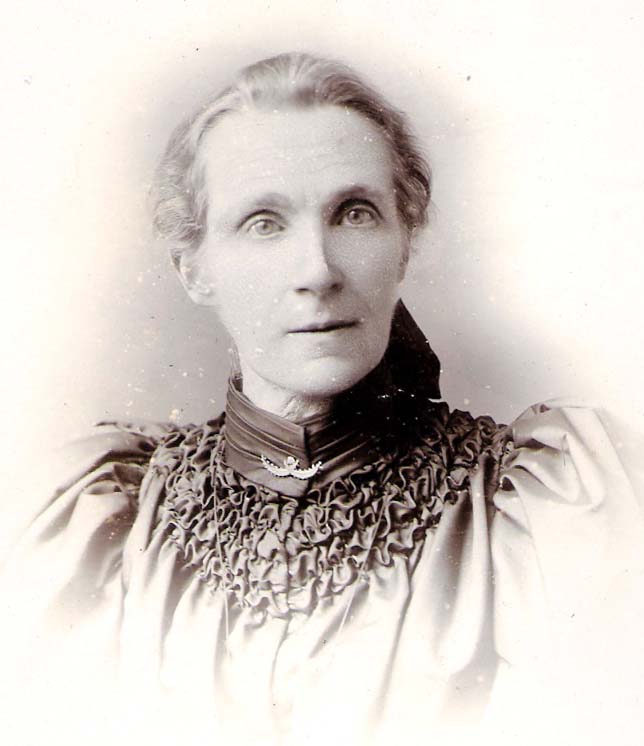
Martha Dance (nee
Blandford, mother of William Dance)
- photo courtesy Martin Dance & Philip Lovelace
- photo courtesy Martin Dance & Philip Lovelace
- Father:
- John Snelling Blandford (1822- 1896)
- Mother:
- Hannah Janes (1823- 1891)
- Birth:
- Jul 30 1843 in Martin, Wiltshire[1] (now Hampshire)
- Occupation:
- Farmer's wife
- Death:
- Jun 4 1904 in New Street, Andover, Hampshire (age 60) of Morbus cordis; exhaustion (age 60)[2]
- Marriage:
- George Dance, 1864, Andover, Hampshire
- Children:
- George Blandford Dance (1865- 1925)
- William Henry Dance (Aug 27 1866-Dec 16 1924), married Amalia Retschlag, 1889, Walloon, Qld.
- Frederick Charles Dance (1869-)
- Hetty Amelia Dance (1870-)
- Arthur John Dance (1872-)
- Ernest Robert Dance (1873-)
- Edwin Evan Dance (1875-)
- Francis Herbert Dance (1876-)
- Mary Anna Dance (1877-)
- Lilian Jane Dance (1880-)
- Harriet Eliza Dance (1882-
- Archibald Snelling Dance (1886-1957)
Martin is a small village near the western edge of the New Forest in Hampshire in the south of England. There, one Sunday in July 1843, Hannah Blandford, the wife of a local carpenter, gave birth to a girl they called Martha Amelia.
By the time Martha was 20, she had moved to the larger centre of Andover, just over 40 kilometres to the north. In Andover, she married a 27-year-old government clerk, George Dance. At that stage, George was living and working some distance away in Devon. George’s family also came from farming stock in Hampshire near Whitchurch but had moved to Andover. The wedding took place in the Independent Chapel, Andover, with the ceremony conducted according to the Rites of the Primitive Methodist congregation.
George took Martha back to Devon, and the couple soon reverted to a farming lifestyle. He left his white-collar work for the Government, and started out by contracting his labour to farms in the district of Plympton St. Mary, a town to the east of Plymouth.
The family improved their lot over the years, firstly with a farm on the outskirts of Plymouth at Tamerton Foliot, where their second son William was born, before moving onto Brisworthy farm, a substantial property of nearly 100 acres (41 hectares) outside the village of Meavy, on the southern edge of Dartmoor.
Martha spent much of the first 15 years of her married life pregnant – during that time, the couple had 10 children. By 1891, at the time of a British census, George and Martha had given up the Brisworthy farm, to take over a property, New Street Farm, back in Andover, near where George’s mother Mary, a widow was still living.
A couple of Martha's letters from that time to her son Fred have survived. Fred also left England, but unlike his older brothers George and William who set out to farm in Australia, he settled in Canada.
These letters show Martha as a devoted mother, anxious about the well being of all her children, and a keen observer of local happenings. In one, she says that if all her emigrant children were in Canada, (and not scattered also to Queensland), she would have "been there before this". In a letter to Fred's new wife, she says:
As to my coming out,
that must be in the far future. Not to be thought of at present,
although my thoughts often wander to Queensland, as well as Canada...
Fred was certainly one of his mother's favourites (although son William in Australia also declared that letters from his dear mother "used to bring a few tears" to his eyes). Martha had hoped that Frederick would one day visit home:
I certainly did want
to see Fred home and sort of made up my mind he would come, was always
looking for a letter saying he was on his way. I even anticipated
going to Southhampton to meet him.
In 1893, two weeks after the death of her husband George,
and on the eve of the wedding of George, one of Queen Victoria's
grandsons, she wrote:
Tomorrow is the Royal wedding. The
town is all astir and there is to be grand doings. I just hear the
procession is to pass our house, so I shall see that much of it. I
feel too depressed to join in any festivities.
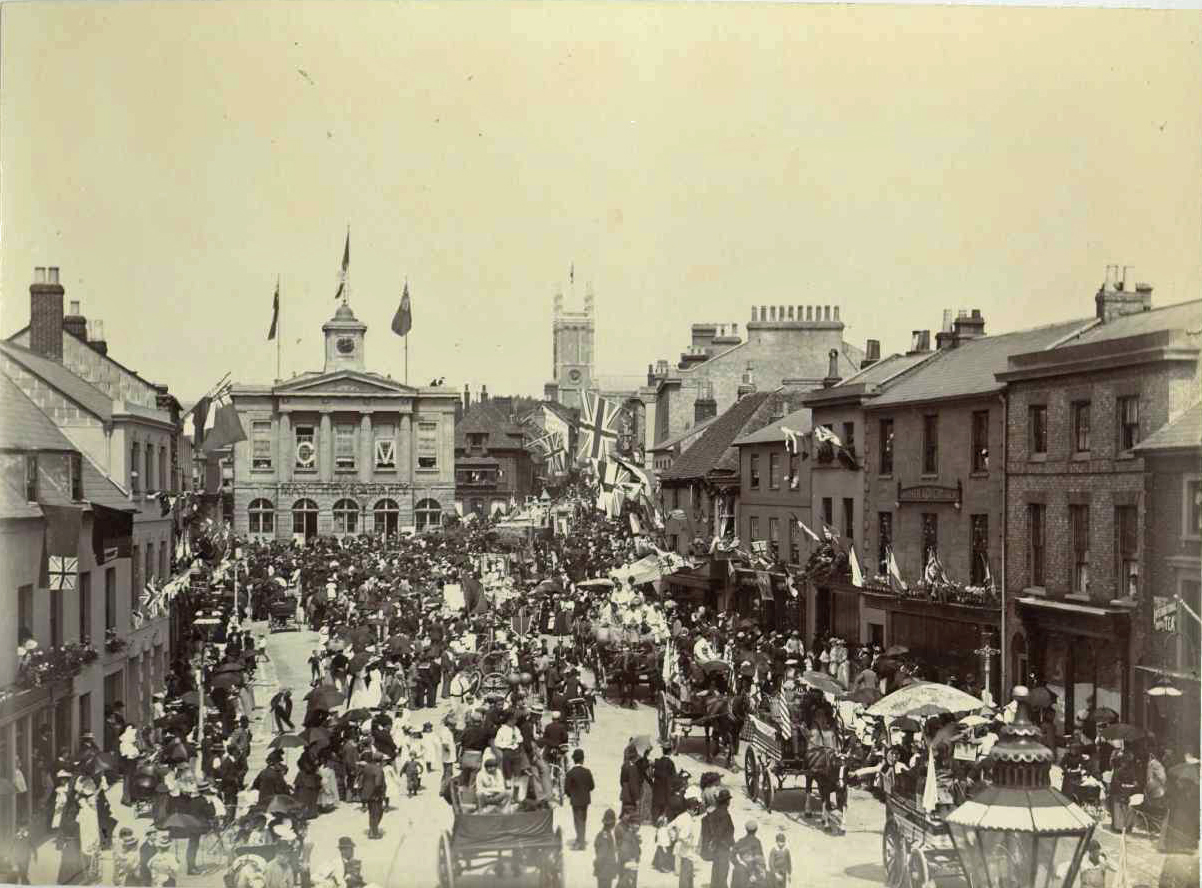
left:
The celebrations in Andover on the occasion of the wedding of
George and Mary, the Duke and Duchess of York, later to be King George V
and Queen Mary.
Just
after the turn of the new century, the street where the family lived,
New Street, hit the headlines with a raging fire which left
more than 100 people homeless, with 20 houses
destroyed. Fortunately, the
Dance home escaped the blaze.
right: The damage in New Street after the fire of 1901
right: The damage in New Street after the fire of 1901
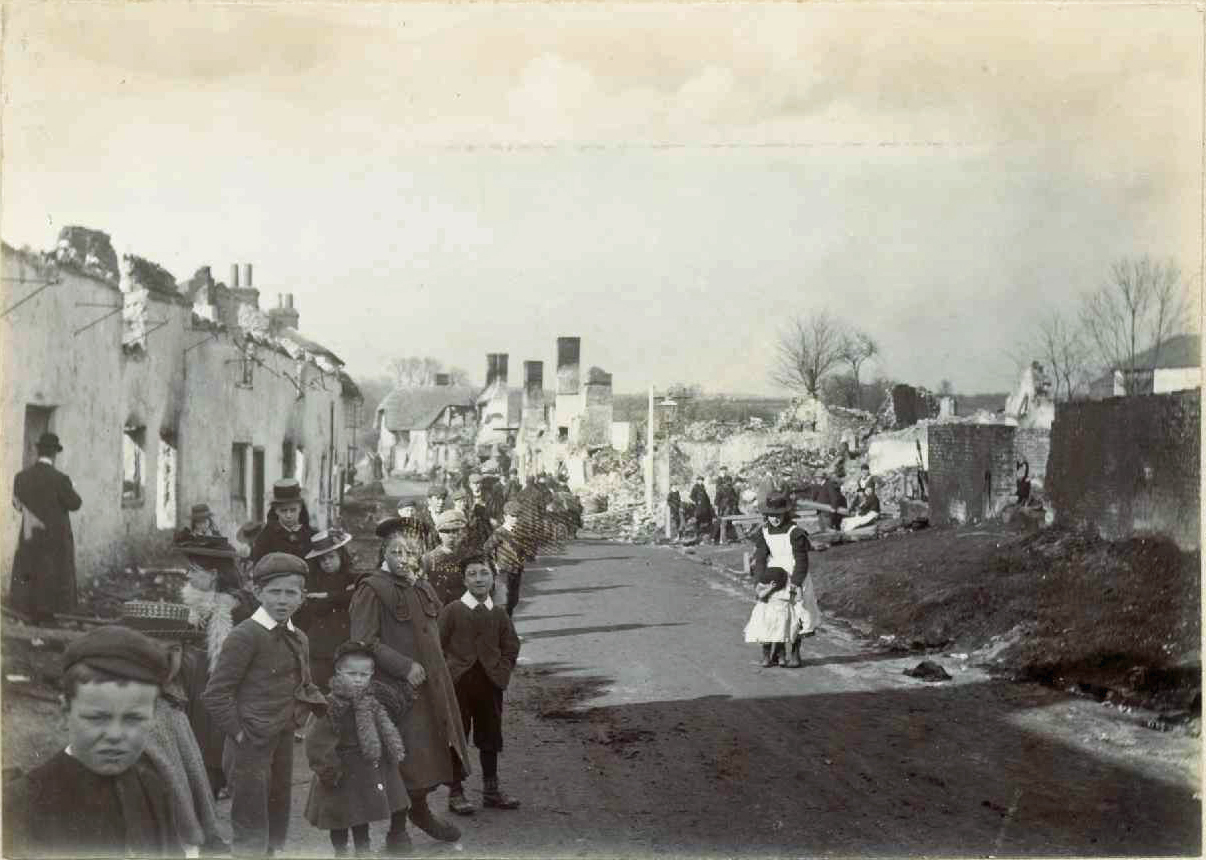
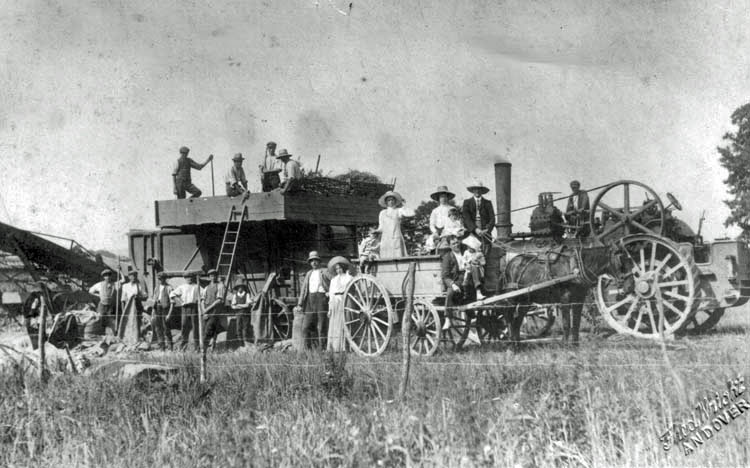
(above):
Workers on the New Street Farm in 1911, only seven years after Martha's
death. Dance family members believe the couple standing together at the
front are Martha's youngest son Archie and his new wife Ellen (nee Gue).
Photo courtesy
Terry Marfell & Martin Dance
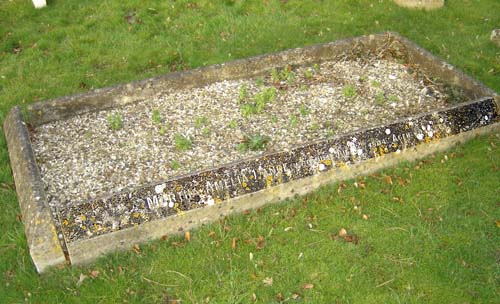
Martha stayed on at the New Street property until she herself succumbed to heart failure and exhaustion in 1904, aged only 60.
(left): This very simple grave, in the churchyard of St Mary's, Andover, is the final resting place of both Martha and George. The hard to read inscription along this side of the grave simply says:
"Martha Amelia Dance, who died July 4 1904, aged 60".